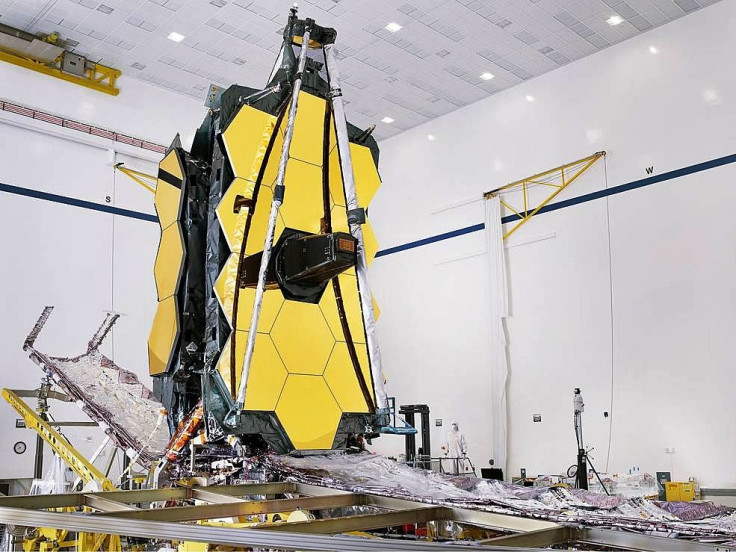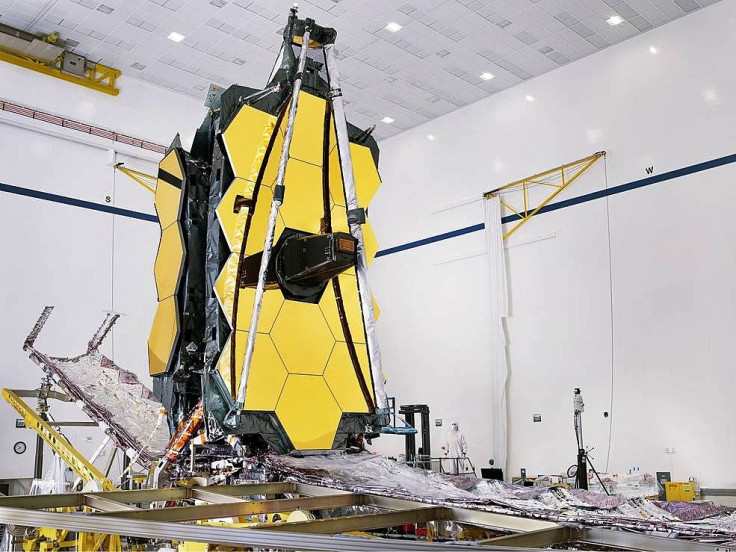NASA’s James Webb Space Telescope Has Been Assembled For The First Time

The James Webb Space Telescope -- the largest and most expensive space telescope in history -- has at last been fully assembled but 12 years behind schedule.
The two halves of the JWST, which when combined is as large as a tennis court, were finally mated by NASA engineers last week. Barring any more glitches, JWST is scheduled to be lofted into space on March 30, 2021 by an Ariane 5ECS heavy lift launch vehicle of Arianespace from the company's launch site at Kourou, French Guiana.
JWST or Webb will become NASA's and the world's most powerful and complex space telescope. It will be positioned near the second Lagrange point (L2) of the Earth-Sun system. This point is 1.5 million km (930,000 miles) from Earth, and directly opposite the Sun.
"This is an exciting time to now see all Webb's parts finally joined together into a single observatory for the very first time," Gregory Robinson, NASA Webb program director, said.
"The engineering team has accomplished a huge step forward and soon we will be able to see incredible new views of our amazing Universe."
NASA said JWST will explore the Universe using infrared light from planets and moons within our Solar System. It will be able to take very precise pictures of the Deep Universe, something only the Hubble Space Telescope is able to achieve right now. Hubble was launched into Earth's orbit in 1990 and remains in operation.
Developing JWST, despite a delay of more than a decade, is an incredible feat in itself.
“The assembly of the telescope and its scientific instruments, sunshield and the spacecraft into one observatory represents an incredible achievement by the entire Webb team,” Bill Ochs, Webb project manager for NASA Goddard Space Flight Center in Greenbelt, Maryland, said.
Ochs noted this milestone represents the combined efforts of thousands of individuals for more than 20 years. These people worked for NASA, the European Space Agency, the Canadian Space Agency, Northrop Grumman, and other NASA industrial and academic partners.

Next up for Webb will be a series of tests that will see engineers fully deploy the five-layer sunshield designed to keep Webb's mirrors and scientific instruments cold by blocking infrared light from the Earth, Moon and Sun. The ability of the sunshield to deploy to its correct shape is vital to the success of JWST in its mission.
JWST originated in 1996 as the Next Generation Space Telescope (NGST). It was renamed JWST in 2002 after the late James E. Webb, NASA's second administrator (1961–1968). Webb became famous for his key role in the Apollo program and establishing scientific research as a core NASA activity.
JWST development began in 1996 with a launch initially planned for 2007. The project, however, has had numerous delays and cost overruns. Construction of JWST was completed in late 2016. The entire project now costs $9.7 billion.



























